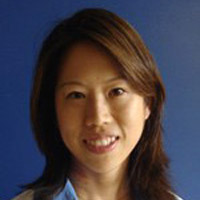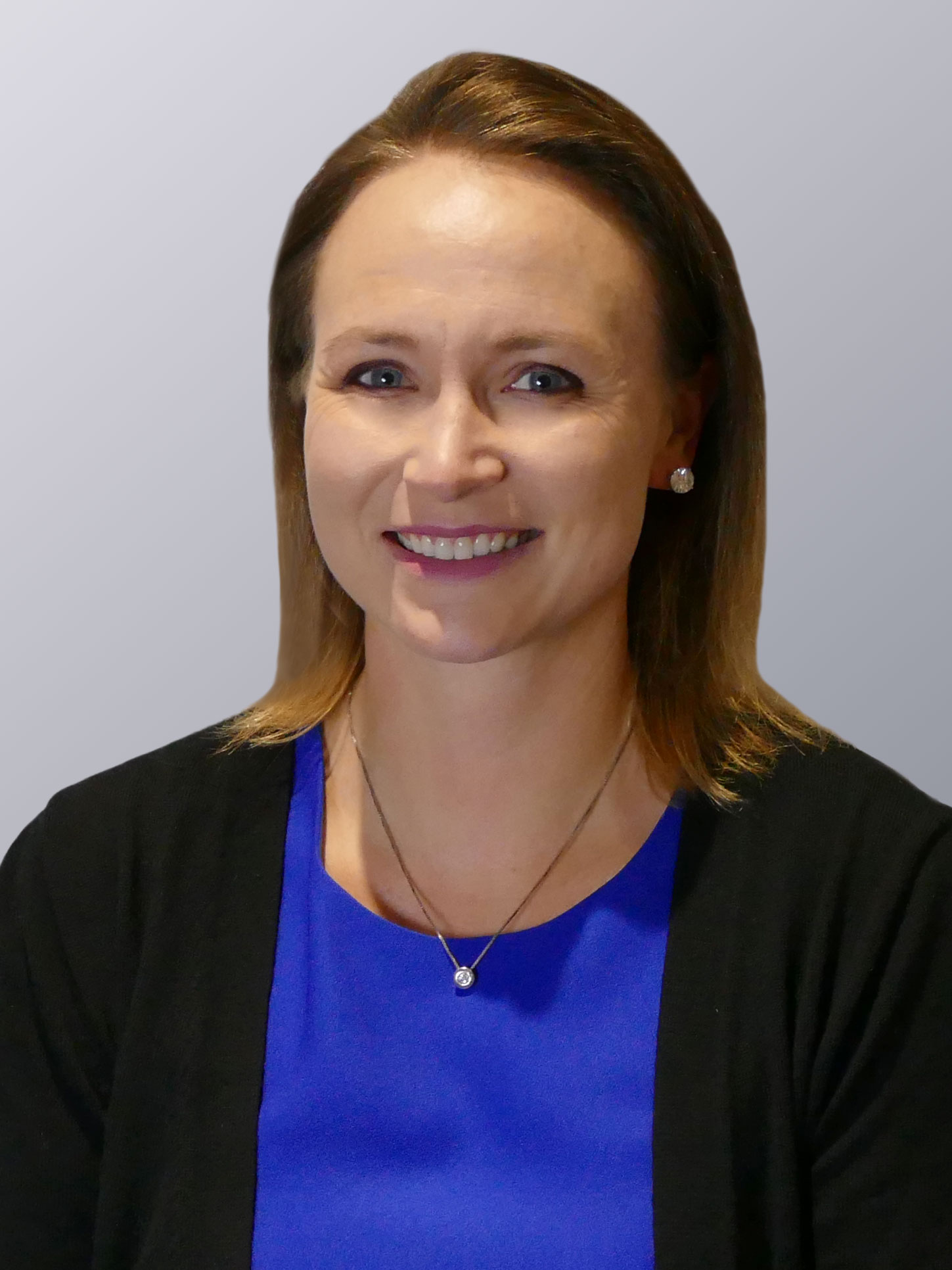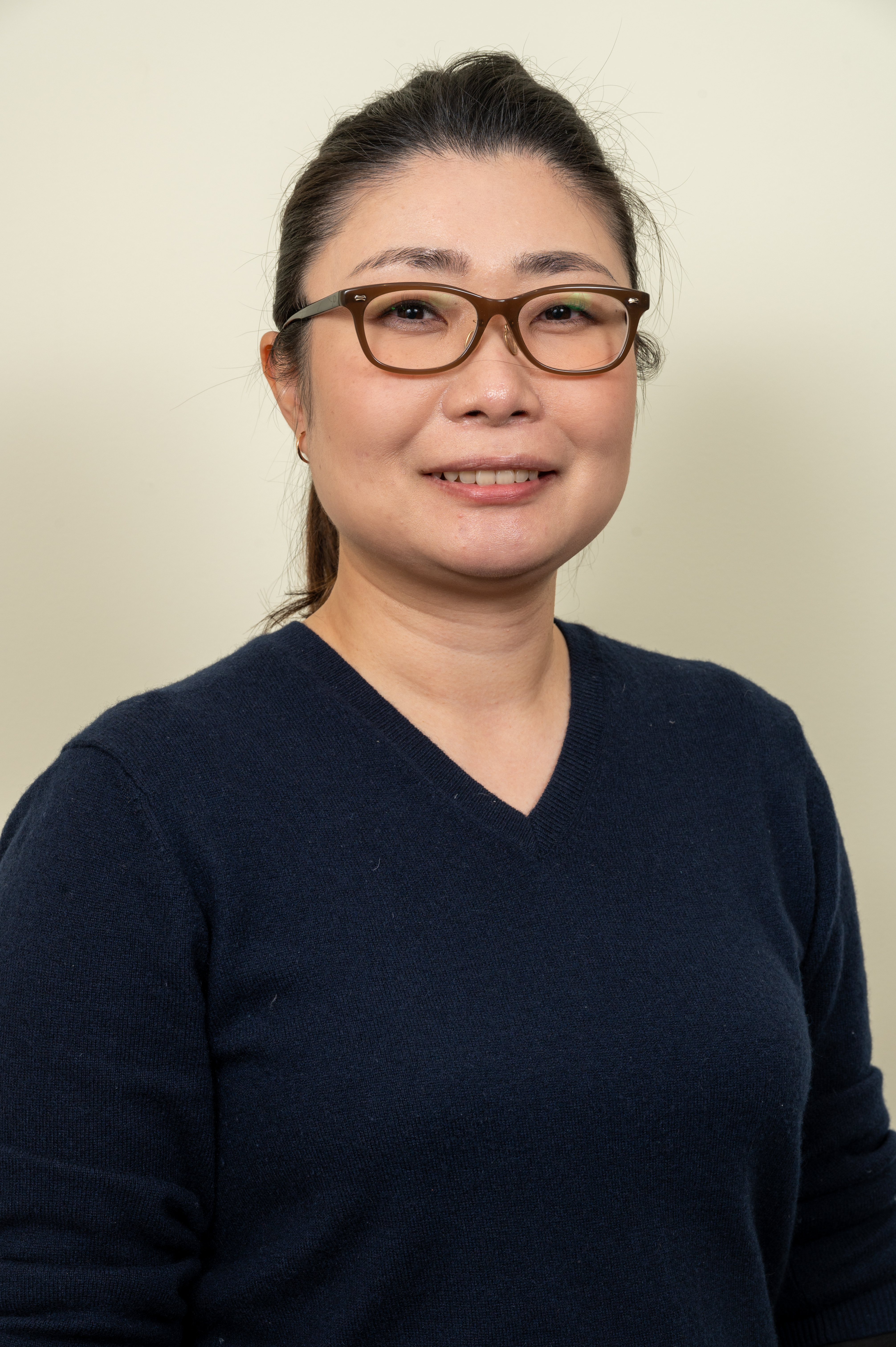The Sjögren’s Foundation is excited to announce the selection of five new research grant recipients for the Foundation’s High Impact Grant, Dynamic Grant, and Pilot Grants.
Types of Foundation Grants and their Impact
The Sjögren’s Foundation High Impact Grants are given to more fully developed research proposals to help a project that has preliminary data and good scientific methodology in place to move forward into the next phase of their project. We are fully committed to awarding one High Impact Grant each year.
The Pilot Research Grant assists investigators in obtaining resources, like preliminary data or feasibility studies, necessary to advance their project to help them pursue larger funding from other resources like the National Institutes of Health (NIH), or a High Impact Grant with the Foundation. We are also committed to awarding one Pilot Grant each year. In 2024, we awarded three Pilot Grants.
The Foundation’s Dynamic Grant is given to investigators that have time-sensitive, but critical work that may fall outside the scope of the Foundation’s other funding opportunities. Proposals for this grant are considered based on their scientific strength, needs for the patient, and available funding.
These Foundation grants not only support research that will benefit patients with Sjögren's, but they are also an investment in the researchers who receive the grants. To demonstrate the importance of this, two past grant recipients, who are internationally recognized Sjögren's researchers share their gratitude.
Sara McCoy, MD, PhD is a rheumatologist who established the Sjögren's Clinic at the University of Wisconsin, where she also has a Sjögren’s research lab. Dr. McCoy credits the Foundation.
As the only non-profit organization for Sjögren's patients, we have a key mission to fund innovative research. We are proud of the research we have funded and honored to have impacted so many amazing investigators.
We are thrilled to see where these projects lead our investigators and how it will impact Sjögren’s patients in the future. Please continue to read about this exciting research funded by the Foundation’s grants below.
High Impact Grant Recipient

R. Hal Scofield, MD
Professor
Oklahoma Medical Research Foundation
Project Title: Mechanisms of Fatigue in Sjögren’s
Abstract: Sjögren’s disease (SjD) is chronic autoimmune disease in which the deleterious immune response is directed primarily towards the exocrine glands, including the lacrimal and salivary glands. Severe fatigue is common in SjD. There is only a limited understanding of the pathophysiology of fatigue in SjD. Overall, there are large areas of unmet medical needs in SjD, including understanding the pathophysiological mechanisms of the clinical manifestations. Our preliminary data demonstrate mitochondrial dysfunction in SjD patients, a novel finding. Also, fatigue is highly correlated with mitochondrial dysfunction. We find increased free radical damage and abnormal expression of mitophagy-related genes. These findings provide a powerful premise for the proposed work. The PI hypothesizes that mitochondrial dysfunction is associated with fatigue and is caused by abnormal mitophagy, with increased free radical generation by defective mitochondria. We propose the following specific aims to address our hypothesis: In Aim 1, we will determine the clinical associations and correlates of mitochondrial dysfunction among a large group of SjD patients, testing the hypothesis that mitochondrial dysfunction is correlated with fatigue. We further hypothesize that kynurenine levels, lowered by chronic, low-level inflammation, will be associated with mitochondrial dysfunction and fatigue in SjD. For Aim 2, we hypothesize that worsened free radical damage will be strongly associated with worsened mitochondrial function. Here, we will determine the role of free radicals in SjD mitochondrial dysfunction. In Aim 3, we will determine the role of mitophagy in SjD mitochondrial dysfunction, testing the hypothesis that not only will one of the two central pathways for mitophagy be abnormal within lymphocytes in the peripheral blood, but that this abnormal expression will be found among those patients with mitochondrial dysfunction and fatigue.
What does Dr. Scofield’s research mean for Sjögren’s patients?
According to the Living with Sjögren’s patient survey results, 88% of respondents experienced fatigue and 79% said that fatigue had a major or moderate impact on their life. Approximately 25% of patient respondents said that fatigue had the greatest negative impact on their life. Dr. Scofield’s research aims to determine the underlying mechanism of fatigue in Sjögren’s, which can help develop future management and treatment options for patients with Sjögren’s and fatigue.
Pilot Grant Recipients

Jennifer King, MD, PhD
Associate Clinical Professor in Medicine
University of California, Los Angeles
Project Title: Molecular Phenotyping of Treatment Responsive Sjögren’s Patients
Abstract: There are no FDA-approved treatments for Sjögren’s disease (SjD). The reasons for failures of immune modulating medications are multi-factorial, including diversity of clinical disease and challenges of selecting primary endpoints to define treatment response. This proposal will examine SjD patients considered treatment responsive (defined here as changes in 1 or more validated Sjögren’s outcome measures) to define objective cellular and molecular markers of change. We will compare these patients to treatment non-responsive and no treatment. We will use single-cell sequencing to examine individual’s pre- and post-treatment samples, looking at global signatures in all immune cells, but also specifically in monocyte subsets. We hypothesize that treatment responsive SjD patients have distinct cellular and molecular characteristics that correlate with changes in disease activity. The goal is to define objective signatures that may be used in conjunction with current disease outcome measures to assess treatment response.
What does Dr. King’s research mean for Sjögren’s patients?
Since Sjögren’s is a heterogeneous disease, there are many unknown factors that play a role in the effectiveness of a treatment. Dr. King’s work will determine cellular and molecular signatures of individual SjD patients and how that affects their response to treatment. This work has huge implications on patient stratification- or separating them into groups- to provide better treatments and will likely impact future drug discovery and clinical research.

Abigail Koppes, PhD
Associate Professor, Chemical Engineering
Northeastern University
Project Title: Parsing Dysautonomia in a Dish: Neural Exposure to Exogenous Sjögren’s Patient Derived Serum
Abstract: The complexity of nervous system interactions and cause-effect of glandular involvement in organ health in Sjögren’s patients creates a difficult disease to treat and identify. Dysautonomia and gastrointestinal disorders are correlated with the presence of autoantibodies and interferon and interleukin cascade activation, but the cause is not known. In this proposal, my lab will apply a new in vitro microphysiological system (MPS), or organ-on-a-chip, that combines human autonomic, central, and enteric neurons to systematically examine morphology and excitability in response to Sjögren’s derived serum and autoantibody insults. Our MPS will be used for effluent collection, electrophysiology, imaging, and transcriptomics with a systems biology approach to identify the molecular regulators and reveal if there are Sjögren’s-based differences in neuron responses to inflammatory cues. Through this proposal, a new MPS will be engineered to controllably study and disrupt the nervous system in the gut-brain axis environment typically inaccessible in vivo.
What does Dr. Koppes’ research mean for Sjögren’s patients?
Dr. Koppes’ research utilizes a newer technique to create a local nervous system microenvironment, also called a “nervous system on a chip”, to study the effect of various disease states. This research will look at how autoantibodies and other factors found in the serum of Sjögren’s patients affect developing neurological conditions associated with the gut-brain axis. We hope this will give us clues to the cause of gastrointestinal disorders and dysautonomia in Sjögren’s patients and allow us to examine the mechanisms of neuro-Sjögren’s.

Eiko Yamada, DDS, PhD
Research Fellow
National Institute of Dental and Craniofacial Research
Project Title: Exploring Target Cells Contributing Higher Interferon Status Through cGAS-STING Pathway in Sjögren’s Disease
Abstract: Sjögren’s disease (SjD) is a common systemic autoimmune disease with heterogeneous clinical presentation involving multiple biological pathways. The primary clinical symptoms include characteristic dry eyes, dry mouth, and profound fatigue. Currently, there are no approved and efficacious medications that can reverse disease progression or improve the main clinical complaints of SjD. One pathway that is classically involved in SjD is the Type-I interferon (IFN) signaling. However, the upstream mechanisms driving the increase in expression, or lack of feedback inhibition, of Type-I IFN is not elucidated deeply. The cGAS-STING pathway is a recently discovered intracellular pathogen sensing pathway that primarily responds to cytosolic double-stranded DNA. The cGAS-STING pathway has become a hot topic in immune and inflammatory diseases due to its ability to potently mediate the inflammatory response. Although a recent study offered the first direct evidence that cGAS-STING pathway is activated in systemic lupus erythematosus patients and modulates Type-I IFNs, the role of this pathway in SjD pathogenesis is unknown. Our preliminary bulk RNAseq data demonstrate enrichment of DNA Sensing Pathway and increased Type-I IFN-stimulated gene score in the blood and gland correlate with specific disease features in SjD. We discovered the novel findings that cGAS-STING proteins are activated in SjD and that correlates with Type-I IFN bioassay in sera. Based on these findings, we hypothesize that cGAS-STING pathway is chronically activated in SjD and contributes both local (glandular) and systemic (peripheral blood) symptoms via upregulated and persistent expression of IFNs. This study proposal aims to identify the specific cell types contributing cGAS-STING pathway in SjD-affected patient samples. This work will produce a deeper understanding of what happened as immune cell subset in SjD and support the future development of cGAS-STING proteins as targets for therapy.
What does Dr. Yamada’s research mean for Sjögren’s patients?
For autoimmune diseases, the prevention of inflammatory responses is a well-known therapeutic pathway. This work will determine deep immune phenotyping (characteristics) and the activation level of cGAS-STING pathway in Sjögren's patients. Investigation of the cGAS-STING pathway may produce a deeper understanding of its role in Sjögren’s patients and provide another therapeutic option for Sjögren’s treatment.
Dynamic Grant Recipient

Dana DiRenzo, MD, MHS
Assistant Professor in Medicine
University of Pennsylvania
Project Title: Development of a Core Outcomes Set of Domains for Sjögren’s Disease
Abstract: Sjögren’s disease (SjD) has limited precise and reliable patient-reported outcome measures (PROs) to understand health related quality of life (HRQoL) from the patient perspective. SjD highly impacts HRQoL because of symptoms such as pain and fatigue, which drive patient disability, loss of work productivity, and healthcare utilization. The overall objectives are to identify SjD domains that are important to all relevant SjD stakeholders and generate a core outcome domain set. The rationale is that through the rigorous methodologic OMERACT framework, we will define key disease domains and core set measures to generate optimal measurement tools for clinical trials. The central hypothesis will be tested by three specific aims: 1) Generate a comprehensive list of important domains in SjD for each key aspect of disease (oral, ocular, biological, extra glandular, life impact) via literature reviews and focus groups; and 2) Conduct a Delphi exercise of generated domains in SjD to gain consensus agreement and inform a core domain set; and 3) Generate a core domain set and seek approval from the OMERACT community. The research proposed is innovative because for the first time, it engages all stakeholders from at least three continents from the start of the process for generation and selection of instruments to measure response in SjD clinical trials.
What does Dr. DiRenzo’s research mean for Sjögren’s patients?
Dr. DiRenzo’s research is an extension of the work done by OMERACT (Outcome Measures in Rheumatology) to produce reliable patient-reported outcome measures to be used for clinical trials. This work will identify Sjögren’s domains that are important and relevant to generate optimal measurement tools, and ultimately, provide critical new outcome measurements for clinical trials. The international Sjögren’s community will be involved to ensure that instruments used to measure response in Sjögren’s clinical trials are best practice and globally accepted.
Congratulations to our Foundation Research Grantees! Good luck with your research this year and we look forward to the impact your research will have on the Sjögren’s community!
The Sjögren’s Foundation is excited to announce the selection of five new research grant recipients for the Foundation’s High Impact Grant, Dynamic Grant, and Pilot Grants.
Types of Foundation Grants and their Impact
The Sjögren’s Foundation High Impact Grants are given to more fully developed research proposals to help a project that has preliminary data and good scientific methodology in place to move forward into the next phase of their project. We are fully committed to awarding one High Impact Grant each year.
The Pilot Research Grant assists investigators in obtaining resources, like preliminary data or feasibility studies, necessary to advance their project to help them pursue larger funding from other resources like the National Institutes of Health (NIH), or a High Impact Grant with the Foundation. We are also committed to awarding one Pilot Grant each year. In 2024, we awarded three Pilot Grants.
The Foundation’s Dynamic Grant is given to investigators that have time-sensitive, but critical work that may fall outside the scope of the Foundation’s other funding opportunities. Proposals for this grant are considered based on their scientific strength, needs for the patient, and available funding.
These Foundation grants not only support research that will benefit patients with Sjögren's, but they are also an investment in the researchers who receive the grants. To demonstrate the importance of this, two past grant recipients, who are internationally recognized Sjögren's researchers share their gratitude.
Sara McCoy, MD, PhD is a rheumatologist who established the Sjögren's Clinic at the University of Wisconsin, where she also has a Sjögren’s research lab. Dr. McCoy credits the Foundation.
Sara McCoy, MD, PhD- Director of the UW Health Sjögren’s Clinic
My grant from the Sjögren's Foundation served as my first steppingstone toward independent research, building my research program momentum. Without this first extramural grant from the Foundation— investing not only in an idea, but also in an early stage Sjögren’s investigator— I would not be in the position to help patients that I find myself now. Since my grant, I’ve been an investigator or collaborator on four NIH-funded grants, including as an AMP® AIM Leadership Scholar Program recipient. I am thankful for the opportunity the Foundation provided and I hope that I can return the favor by improving Sjögren’s patients’ lives.
Dr. Sara McCoy Provider Profile at UWHChristopher Lessard, PhD, a scientist at the Oklahoma Medical Research Foundation, leads the international Sjögren's Genetics Network. He received his very first research grant from the Foundation in 2013 and shared the immense value of that grant.
Christopher Lessard, PhD- Professor, Oklahoma Medical Research Foundation
Sjögren’s Foundation grants provide vital support for researchers focused on advancing our knowledge about Sjögren’s. A Foundation Pilot Grant was the first grant I received as an early-career investigator. It was instrumental in the early progression of my career, and I know several other investigators that have had similar experiences. Nearly a decade later, my research program was honored as the first recipient of the Foundation’s Dynamic Grant, which is aiding in our ongoing efforts to improve genetic understanding of the disease. Foundation grants go a long way towards building the Sjögren’s research community and providing pilot or bridge funding to projects that may otherwise not have happened.
Dr. Chris Lessard Scientist Profile a OMRFAs the only non-profit organization for Sjögren's patients, we have a key mission to fund innovative research. We are proud of the research we have funded and honored to have impacted so many amazing investigators.
We are thrilled to see where these projects lead our investigators and how it will impact Sjögren’s patients in the future. Please continue to read about this exciting research funded by the Foundation’s grants below.
High Impact Grant Recipient
R. Hal Scofield, MD
Professor
Oklahoma Medical Research Foundation
Project Title: Mechanisms of Fatigue in Sjögren’s
Abstract: Sjögren’s disease (SjD) is chronic autoimmune disease in which the deleterious immune response is directed primarily towards the exocrine glands, including the lacrimal and salivary glands. Severe fatigue is common in SjD. There is only a limited understanding of the pathophysiology of fatigue in SjD. Overall, there are large areas of unmet medical needs in SjD, including understanding the pathophysiological mechanisms of the clinical manifestations. Our preliminary data demonstrate mitochondrial dysfunction in SjD patients, a novel finding. Also, fatigue is highly correlated with mitochondrial dysfunction. We find increased free radical damage and abnormal expression of mitophagy-related genes. These findings provide a powerful premise for the proposed work. The PI hypothesizes that mitochondrial dysfunction is associated with fatigue and is caused by abnormal mitophagy, with increased free radical generation by defective mitochondria. We propose the following specific aims to address our hypothesis: In Aim 1, we will determine the clinical associations and correlates of mitochondrial dysfunction among a large group of SjD patients, testing the hypothesis that mitochondrial dysfunction is correlated with fatigue. We further hypothesize that kynurenine levels, lowered by chronic, low-level inflammation, will be associated with mitochondrial dysfunction and fatigue in SjD. For Aim 2, we hypothesize that worsened free radical damage will be strongly associated with worsened mitochondrial function. Here, we will determine the role of free radicals in SjD mitochondrial dysfunction. In Aim 3, we will determine the role of mitophagy in SjD mitochondrial dysfunction, testing the hypothesis that not only will one of the two central pathways for mitophagy be abnormal within lymphocytes in the peripheral blood, but that this abnormal expression will be found among those patients with mitochondrial dysfunction and fatigue.
What does Dr. Scofield’s research mean for Sjögren’s patients?
According to the Living with Sjögren’s patient survey results, 88% of respondents experienced fatigue and 79% said that fatigue had a major or moderate impact on their life. Approximately 25% of patient respondents said that fatigue had the greatest negative impact on their life. Dr. Scofield’s research aims to determine the underlying mechanism of fatigue in Sjögren’s, which can help develop future management and treatment options for patients with Sjögren’s and fatigue.
Pilot Grant Recipients
Jennifer King, MD, PhD
Associate Clinical Professor in Medicine
University of California, Los Angeles
Project Title: Molecular Phenotyping of Treatment Responsive Sjögren’s Patients
Abstract: There are no FDA-approved treatments for Sjögren’s disease (SjD). The reasons for failures of immune modulating medications are multi-factorial, including diversity of clinical disease and challenges of selecting primary endpoints to define treatment response. This proposal will examine SjD patients considered treatment responsive (defined here as changes in 1 or more validated Sjögren’s outcome measures) to define objective cellular and molecular markers of change. We will compare these patients to treatment non-responsive and no treatment. We will use single-cell sequencing to examine individual’s pre- and post-treatment samples, looking at global signatures in all immune cells, but also specifically in monocyte subsets. We hypothesize that treatment responsive SjD patients have distinct cellular and molecular characteristics that correlate with changes in disease activity. The goal is to define objective signatures that may be used in conjunction with current disease outcome measures to assess treatment response.
What does Dr. King’s research mean for Sjögren’s patients?
Since Sjögren’s is a heterogeneous disease, there are many unknown factors that play a role in the effectiveness of a treatment. Dr. King’s work will determine cellular and molecular signatures of individual SjD patients and how that affects their response to treatment. This work has huge implications on patient stratification- or separating them into groups- to provide better treatments and will likely impact future drug discovery and clinical research.
Abigail Koppes, PhD
Associate Professor, Chemical Engineering
Northeastern University
Project Title: Parsing Dysautonomia in a Dish: Neural Exposure to Exogenous Sjögren’s Patient Derived Serum
Abstract: The complexity of nervous system interactions and cause-effect of glandular involvement in organ health in Sjögren’s patients creates a difficult disease to treat and identify. Dysautonomia and gastrointestinal disorders are correlated with the presence of autoantibodies and interferon and interleukin cascade activation, but the cause is not known. In this proposal, my lab will apply a new in vitro microphysiological system (MPS), or organ-on-a-chip, that combines human autonomic, central, and enteric neurons to systematically examine morphology and excitability in response to Sjögren’s derived serum and autoantibody insults. Our MPS will be used for effluent collection, electrophysiology, imaging, and transcriptomics with a systems biology approach to identify the molecular regulators and reveal if there are Sjögren’s-based differences in neuron responses to inflammatory cues. Through this proposal, a new MPS will be engineered to controllably study and disrupt the nervous system in the gut-brain axis environment typically inaccessible in vivo.
What does Dr. Koppes’ research mean for Sjögren’s patients?
Dr. Koppes’ research utilizes a newer technique to create a local nervous system microenvironment, also called a “nervous system on a chip”, to study the effect of various disease states. This research will look at how autoantibodies and other factors found in the serum of Sjögren’s patients affect developing neurological conditions associated with the gut-brain axis. We hope this will give us clues to the cause of gastrointestinal disorders and dysautonomia in Sjögren’s patients and allow us to examine the mechanisms of neuro-Sjögren’s.
Eiko Yamada, DDS, PhD
Research Fellow
National Institute of Dental and Craniofacial Research
Project Title: Exploring Target Cells Contributing Higher Interferon Status Through cGAS-STING Pathway in Sjögren’s Disease
Abstract: Sjögren’s disease (SjD) is a common systemic autoimmune disease with heterogeneous clinical presentation involving multiple biological pathways. The primary clinical symptoms include characteristic dry eyes, dry mouth, and profound fatigue. Currently, there are no approved and efficacious medications that can reverse disease progression or improve the main clinical complaints of SjD. One pathway that is classically involved in SjD is the Type-I interferon (IFN) signaling. However, the upstream mechanisms driving the increase in expression, or lack of feedback inhibition, of Type-I IFN is not elucidated deeply. The cGAS-STING pathway is a recently discovered intracellular pathogen sensing pathway that primarily responds to cytosolic double-stranded DNA. The cGAS-STING pathway has become a hot topic in immune and inflammatory diseases due to its ability to potently mediate the inflammatory response. Although a recent study offered the first direct evidence that cGAS-STING pathway is activated in systemic lupus erythematosus patients and modulates Type-I IFNs, the role of this pathway in SjD pathogenesis is unknown. Our preliminary bulk RNAseq data demonstrate enrichment of DNA Sensing Pathway and increased Type-I IFN-stimulated gene score in the blood and gland correlate with specific disease features in SjD. We discovered the novel findings that cGAS-STING proteins are activated in SjD and that correlates with Type-I IFN bioassay in sera. Based on these findings, we hypothesize that cGAS-STING pathway is chronically activated in SjD and contributes both local (glandular) and systemic (peripheral blood) symptoms via upregulated and persistent expression of IFNs. This study proposal aims to identify the specific cell types contributing cGAS-STING pathway in SjD-affected patient samples. This work will produce a deeper understanding of what happened as immune cell subset in SjD and support the future development of cGAS-STING proteins as targets for therapy.
What does Dr. Yamada’s research mean for Sjögren’s patients?
For autoimmune diseases, the prevention of inflammatory responses is a well-known therapeutic pathway. This work will determine deep immune phenotyping (characteristics) and the activation level of cGAS-STING pathway in Sjögren's patients. Investigation of the cGAS-STING pathway may produce a deeper understanding of its role in Sjögren’s patients and provide another therapeutic option for Sjögren’s treatment.
Dynamic Grant Recipient
Dana DiRenzo, MD, MHS
Assistant Professor in Medicine
University of Pennsylvania
Project Title: Development of a Core Outcomes Set of Domains for Sjögren’s Disease
Abstract: Sjögren’s disease (SjD) has limited precise and reliable patient-reported outcome measures (PROs) to understand health related quality of life (HRQoL) from the patient perspective. SjD highly impacts HRQoL because of symptoms such as pain and fatigue, which drive patient disability, loss of work productivity, and healthcare utilization. The overall objectives are to identify SjD domains that are important to all relevant SjD stakeholders and generate a core outcome domain set. The rationale is that through the rigorous methodologic OMERACT framework, we will define key disease domains and core set measures to generate optimal measurement tools for clinical trials. The central hypothesis will be tested by three specific aims: 1) Generate a comprehensive list of important domains in SjD for each key aspect of disease (oral, ocular, biological, extra glandular, life impact) via literature reviews and focus groups; and 2) Conduct a Delphi exercise of generated domains in SjD to gain consensus agreement and inform a core domain set; and 3) Generate a core domain set and seek approval from the OMERACT community. The research proposed is innovative because for the first time, it engages all stakeholders from at least three continents from the start of the process for generation and selection of instruments to measure response in SjD clinical trials.
What does Dr. DiRenzo’s research mean for Sjögren’s patients?
Dr. DiRenzo’s research is an extension of the work done by OMERACT (Outcome Measures in Rheumatology) to produce reliable patient-reported outcome measures to be used for clinical trials. This work will identify Sjögren’s domains that are important and relevant to generate optimal measurement tools, and ultimately, provide critical new outcome measurements for clinical trials. The international Sjögren’s community will be involved to ensure that instruments used to measure response in Sjögren’s clinical trials are best practice and globally accepted.
Congratulations to our Foundation Research Grantees! Good luck with your research this year and we look forward to the impact your research will have on the Sjögren’s community!
Sjögren's Foundation Grants
Click below to learn more about the Foundation’s research opportunities or current and past grant recipients.